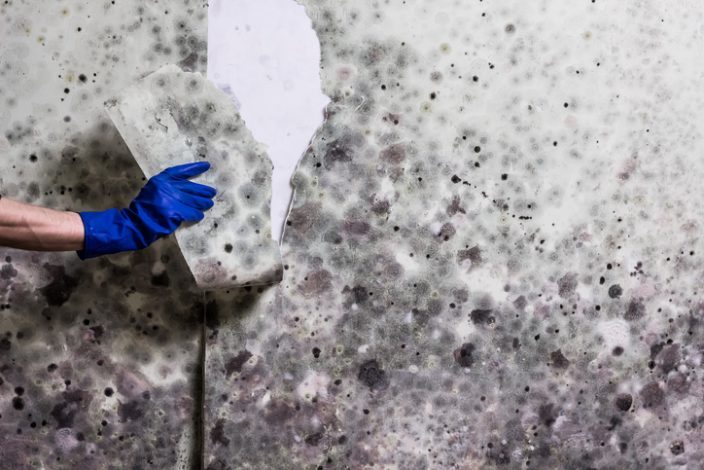Your Ultimate Guide to Blog Post Mold And Mildew Removal Techniques
Navigating the world of post-mold removal strategies is a precise process that demands interest to information and a detailed understanding of the ins and outs involved. In the after-effects of mold and mildew invasion, understanding exactly how to effectively get rid of the mold and stop its reoccurrence is vital for maintaining a healthy interior atmosphere. From choosing the appropriate cleansing and decontaminating methods to applying techniques for long-lasting mold avoidance, each step in the removal trip plays a crucial role in making certain a successful result. As we get started on this exploration of post-mold remediation techniques, we will certainly uncover the key strategies and ideal techniques that can aid you recover your space to its pre-mold condition and safeguard it against future mold hazards.
Understanding Post-Mold Removal Process
After completing the mold and mildew removal procedure, it is crucial to understand the post-mold remediation methods that are needed to guarantee a effective and thorough cleanup. Once the mold and mildew has actually been removed, the next action involves cleaning and disinfecting the influenced areas to avoid any kind of regrowth of mold and mildew. This includes making use of specialized cleansing representatives to wipe down surfaces and eliminate any type of staying mold and mildew spores. It is crucial to dry out the area entirely to inhibit the growth of mold and mildew in the future (Post Remediation verification). Appropriate ventilation and dehumidification can help in this procedure.
Furthermore, carrying out a last assessment post-remediation is vital to ensure that all mold and mildew has been successfully gotten rid of. This evaluation needs to entail a detailed aesthetic check along with perhaps air tasting to verify the lack of mold spores airborne. Additional removal might be necessary if the evaluation discloses any kind of lingering mold. Finally, enlightening passengers on safety nets such as controlling wetness levels and without delay dealing with any kind of water leakages can help keep a mold-free atmosphere.
Effective Cleaning and Disinfecting Approaches

Preventing Future Mold Growth

Value of Appropriate Ventilation
Correct ventilation plays an important role in preventing dampness buildup, a key variable in mold development within indoor settings. Efficient air flow systems help get rid of excess humidity from the air, lowering the possibilities of mold and mildew spores discovering the dampness they need to spread and sprout. Without appropriate air flow, interior spaces can come to be a breeding ground for mold and mildew, leading to prospective wellness risks and architectural damages.
By guaranteeing correct air circulation, ventilation systems can also help in drying out wet areas more quickly after water damages or flooding events, better discouraging mold and mildew growth. what to do after mold remediation. In spaces like shower rooms, basements, kitchen areas, and attic rooms where wetness degrees often tend to be greater, installing and maintaining efficient ventilation systems is vital in preventing mold After mold remediation invasions

Tracking and Upkeep Tips
Given the important role that proper air flow plays in avoiding mold and mildew development, it is crucial to develop efficient tracking and upkeep pointers to make certain the ongoing capability of air flow systems. Surveillance humidity levels within the residential property is likewise critical, as high moisture can add to mold and mildew development. By staying mindful and aggressive to the condition of air flow systems, residential or commercial property owners can effectively mitigate the threat of mold regrowth and keep a healthy and balanced interior environment.
Conclusion
In conclusion, post-mold remediation techniques are crucial for ensuring a risk-free and clean setting. Comprehending the procedure, implementing reliable cleaning and disinfecting approaches, preventing future mold and mildew growth, maintaining appropriate ventilation, and normal monitoring are all important action in the remediation process. By adhering to these standards, you can effectively remove mold and prevent its return, advertising a healthy living or functioning area for all occupants.
In the results of mold problem, understanding how to successfully eradicate the mold and mildew and prevent its reoccurrence is extremely important for preserving a healthy indoor setting. When the mold and mildew has been gotten rid of, the next step includes cleansing and sanitizing the influenced locations to prevent any type of regrowth of mold and mildew - Post Remediation Inspection near me. After getting rid of visible mold development, it is essential to clean all surface areas in the afflicted location to get rid of any kind of continuing to be mold spores. To better enhance mold and mildew avoidance actions, it is vital to resolve underlying concerns that initially led to mold growth.Offered the critical role that appropriate ventilation plays in protecting against mold growth, it is critical to establish effective monitoring and maintenance suggestions to make certain the ongoing functionality of ventilation systems